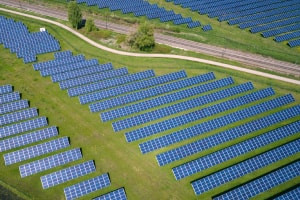This course focuses on the most important aspects related to the energy economy, energy systems, renewable and non-renewable energy resources and the environmental impact they have on society. It also offers a small glimpse of what the energy systems of the future may look like and the energy transition needed for a cleaner and more sustainable world.
The course begins with basic concepts such as the flow diagram and current energy trends across the globe. You will be presented with examples of the energy systems and balances of three different countries. You will learn how to analyse different energy systems and the best way to develop energy systems, maximizing efficiency with affordable costs.
This course will teach you about fossil fuels, renewable resources and the different impacts on the economy. This will include looking at efficiency, costs, impact and the implications of switching from a fossil fuel system to a renewable energy system. You will analyse this in economic and social terms and in the sense of developing energy policies according to the needs of the population and companies. Examples will be given to help you better understand the issues presented throughout this course.
In addition to this, you will learn the different kinds of financing available for green energy. The learner will be taught about energy efficiency renewables projects and the kind of investments that are required for reducing the CO2 emissions and reducing climate change. You will also learn about the sources of finance available right now, the characteristics of the funding and the fund's source.
The course will also teach you about energy transitions that have occurred in the past in areas such as transportation and commerce and about the challenge of an energy transition. You will also learn the calculations to obtain the optimal efficiency of an energy device, the types of configurations, hydrogen pathways and the options for power generation from a carbon dioxide point of view.
What You Will Learn In This Free Course
View All Learning Outcomes View Less All Alison courses are free to enrol, study, and complete. To successfully complete this Diploma course and become an Alison Graduate, you need to achieve 80% or higher in each course assessment.
Once you have completed this Diploma course, you have the option to acquire an official Diploma, which is a great way to share your achievement with the world.
Your Alison certificate is:
- Ideal for sharing with potential employers.
- Great for your CV, professional social media profiles, and job applications.
- An indication of your commitment to continuously learn, upskill, and achieve high results.
- An incentive for you to continue empowering yourself through lifelong learning.
Alison offers 2 types of Diploma for completed Diploma courses:
- Digital Diploma: a downloadable Diploma in PDF format immediately available to you when you complete your purchase.
- Physical Diploma: a physical version of your officially branded and security-marked Diploma
All Diplomas are available to purchase through the Alison Shop. For more information on purchasing Alison Diploma, please visit our FAQs. If you decide not to purchase your Alison Diploma, you can still demonstrate your achievement by sharing your Learner Record or Learner Achievement Verification, both of which are accessible from your Account Settings.











 Avg. Hours
Avg. Hours  Contains Video
Contains Video  CPD Accredited
CPD Accredited 
 Total XP:
Total XP: 
 Knowledge & Skills You Will Learn
Knowledge & Skills You Will Learn 






